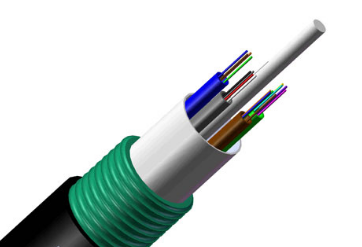- Related articles
- Apply to 100GBASE-LR4 Standard optical transceiver models
- All Cisco ONS-SC-GE-LX's information (List price, Specs, Datasheet PDF, Compatibility matr
- What Is GYTS Fiber Optic Cable?
- Optical Transceivers for Cisco IE-2000-8TC-G-L Switch
- How to Optimize Data Center with Ribbon Fiber Optic Cable?
- Optical Transceivers for Cisco WS-C3750G-24PS-S Switch
- All Cisco XFP10GLR-192SR-L's information (List price, Specs, Datasheet PDF, Compatibility
- What is a DWDM transceiver?
- Used In 10GBASE-SR Standard Optical Transceiver Models
- Cost-effective & Scalable Solution To Cisco CWDM SFPs
Recommend tag

What Is Pipeline Fiber Optic Cable?
2017-02-13
Definition of pipeline fiber optic cable
Pipeline fiber optic cable is a great fiber cable with fantastic features. Its application has grown widely in recent years and made the fiber to be one of the most recommended by the technicians. Consequently, pipeline fiber optic cable is best suitable in long distance communication. Normally, pipeline fiber optic cables are laid underground and has got exceptional characteristic that guarantees it durability and superior performance. Furthermore, there are several types of pipeline fiber optic cable which includes; Totally Gel-Free optical fiber cable, loose tube optical fiber cable, ribbon optical fiber cable, FTTX optical fiber cable, central core optical fiber cable, micro-cables and blown fiber units, and industrial optical fiber cable.
Application of pipeline fiber optic cable
Pipeline fiber optic cable was invented to carry huge amounts of voice data over long distances very efficiently. Due to advancements in optical technology, we can now use fiber optic cables as an actual sensor - a sensor with the ability to measure parameters such as acoustic energy, temperature, strain, and vibration, every meter along the fiber continuously, 24/7, with very high precision.
The capability of continuously gathering data about these parameters over several kilometers of fiber simultaneously is called distributed monitoring. By installing a fiber optic line directly along a pipeline or wellbore, we have a very effective sensor for critical applications such as: pipeline leak detection and prevention, asset and perimeter security, and precise fluid flow measurements.

An external Pipeline Fiber Optic Cable, often included during pipeline installation for communications, is used to detect leaks, ground movement and third party intrusion, helping avoid pipeline damage.
Pipeline Fiber Optic Cable transforms data at minimal extra cost. This technique helps operators detect the earliest stages of threats to the pipeline, giving them time and information to enable an efficient response.
Conclusion
This article critically analyses the usage of the Pipeline Fiber Optic Cable in the communication industry. The technology advancement has greatly boosted the use of Pipeline Fiber Optic Cable across the world. As a matter of fact, Pipeline Fiber Optic Cable is the most suitable fiber optic used for long-distance telecommunication especially in the rural areas. Due to insecurity exposure to high rate of risk in some rural parts, Pipeline Fiber Optic Cable is preferred since it is laid underground. However, it requires a effective technical knowledge to operate this form of fiber cable. For that reason, it becomes a challenge for some users to use it and that forces them to gain a substantial knowledge through training program.

TECHNICAL SUPPORT
Get solutions or consultation from the technical team.




















































